The train station in
North Bennington is a significant railroad structure.
Built in 1880 at the Main Street grade crossing and
known as the office call of "NR". This location placed
it just west of the switch for the wye to Bennington.
Described architecturally as Empire style, the station
is currently used by several local government agencies.
The building was entered in the National Register on
April 11, 1973.
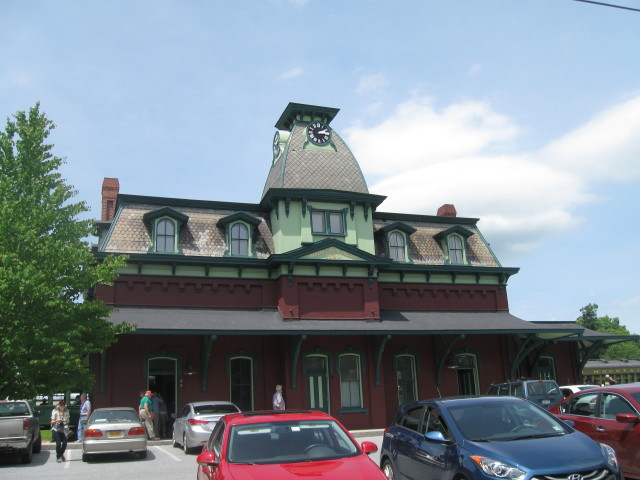
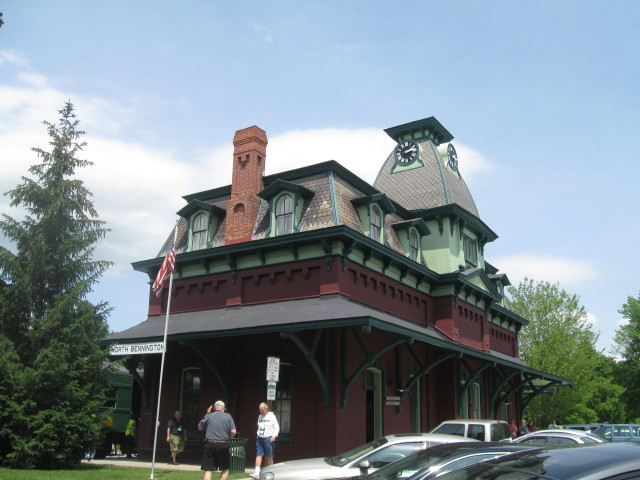
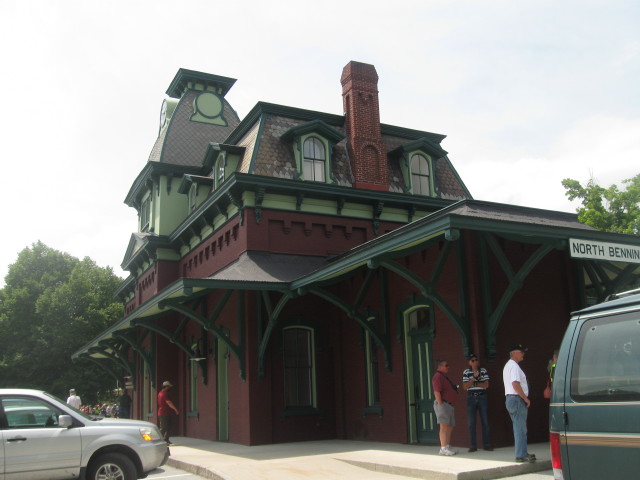
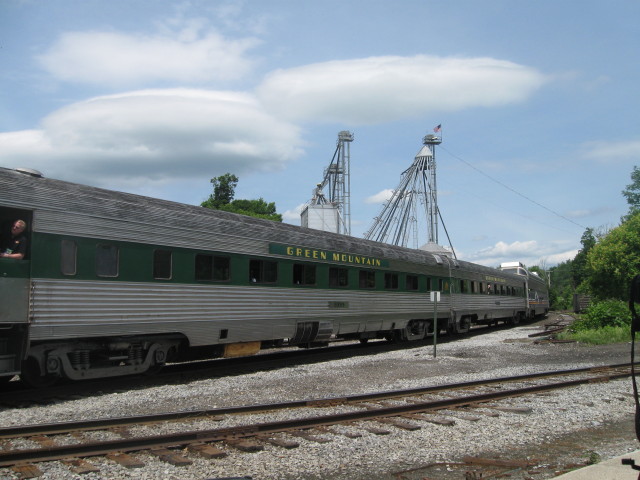
Table Car
Car #3089 was built by Budd for the ATSF in February,
1937. It has been rebuilt into a 52-seat table car
with a bar area on one end.
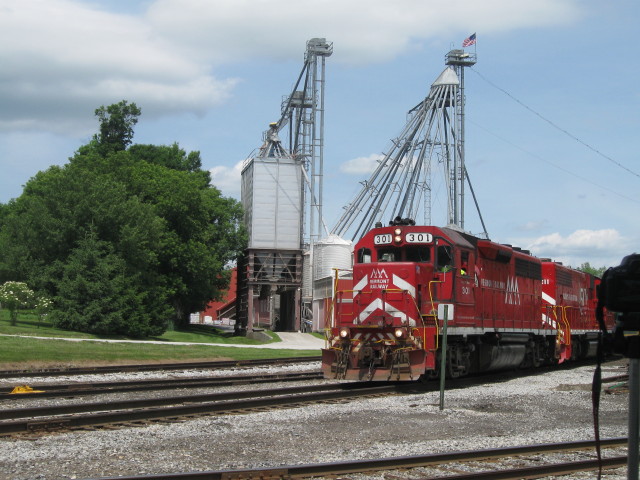
Today's power #301 & #311.
We are now watching a magic show with a disappearing
act.
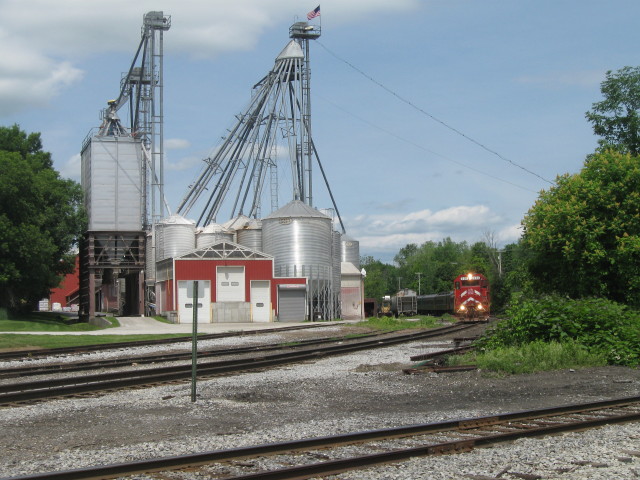
In background, tracks still used by Whitman's Feed
Store and their elevator complex.
Our train continues getting smaller and smaller.
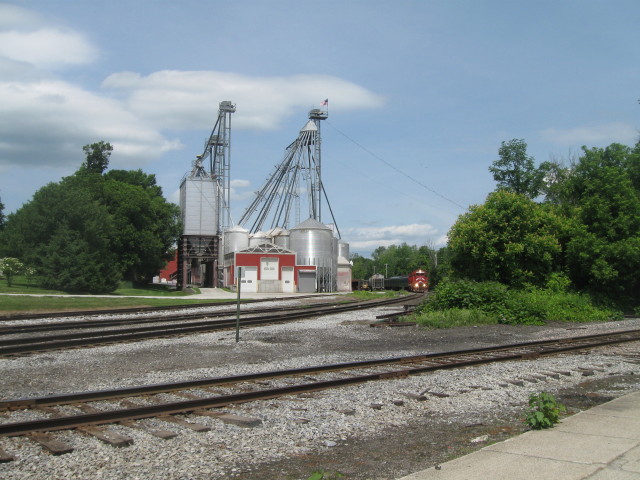
Our train is so tiny and far away.
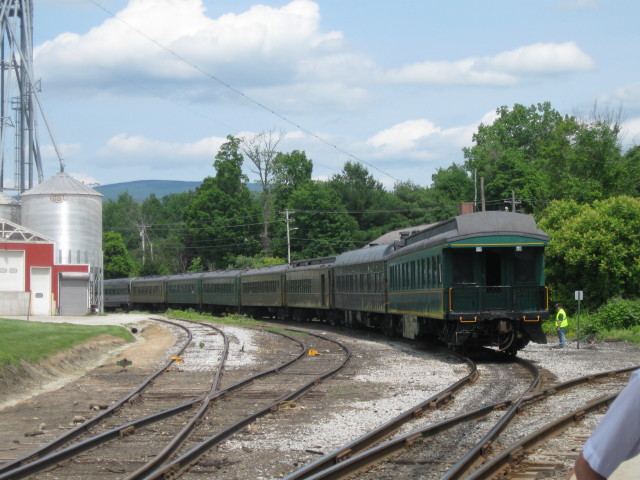
Now our train reappears sans locos 301 and 311.
The business car Macintyre featuring an open platform
will now be the end of the train. But it will be on
point for our trip to Hoosick Junction as we will be
pushed over the state line. What a view for those on
the open platform going to Hoosick Junction.
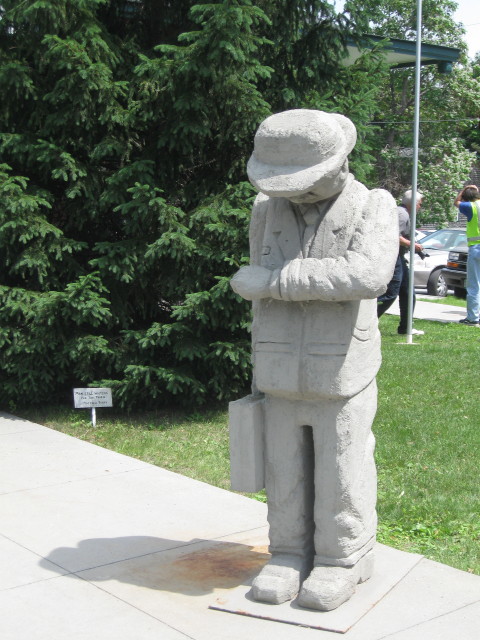
The unknown traveler.
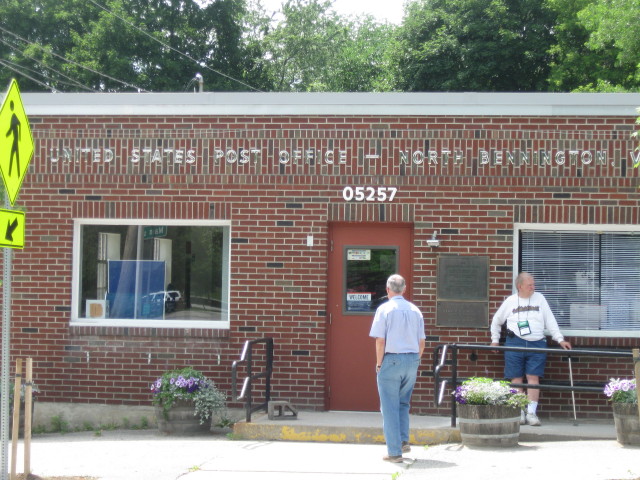
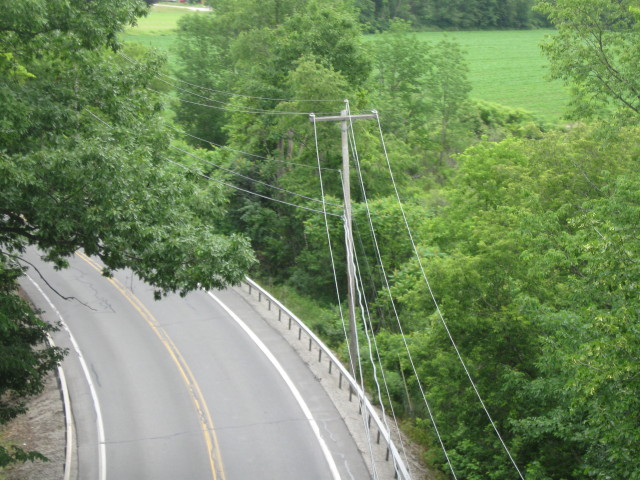
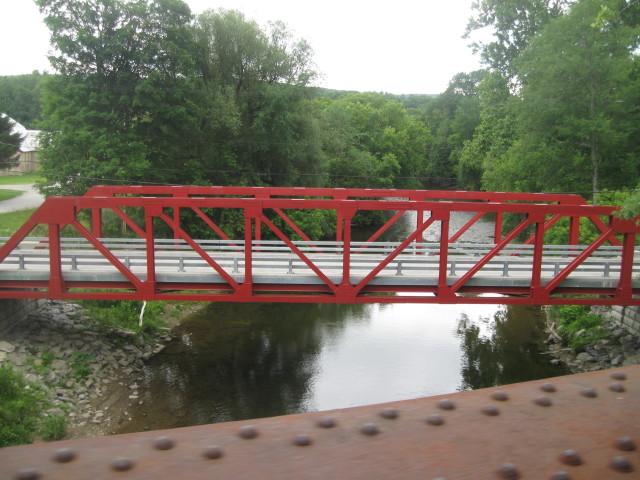
Walloomsac River.
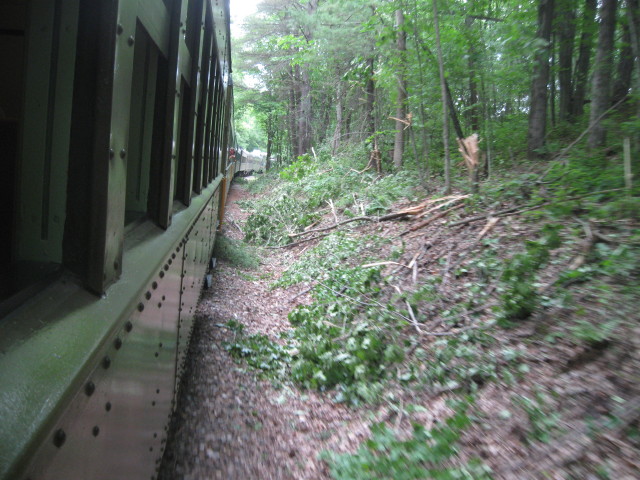
Looking toward locos end of train.
MP H2.2
Walloomsac - The word walloomsac is reportedly a
Dutch term (wallumschaik) meaning Wallum's patent.
The Walloomsac patent was to the north of the larger
Hoosick patent, and was made on June 15, 1739. Among
those involved with the patent were Gerardus
Stuyvesant and Stephen Van Rensselaer.
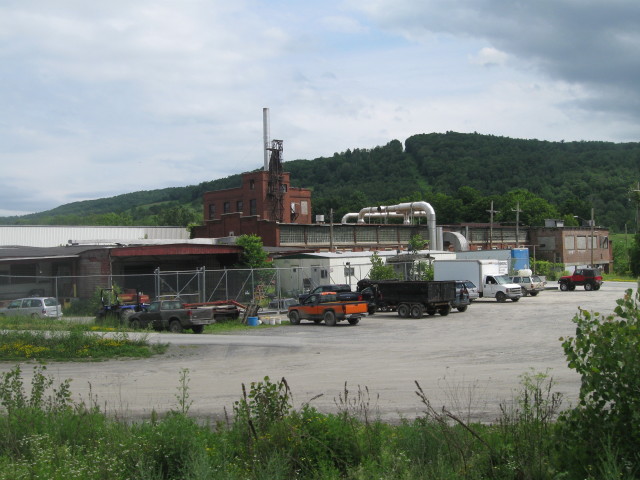
This mill dates
back to 1854 when the mill made cloth from cotton.
Sometime over the years, the plant was changed to
make paper. A marble plaque on one of the buildings
states that the mill was rebuilt in 1874, 1881, 1900
and 1914.

After passing
through numerous hands, the Windsor Paper Company
bought the mill in 1941 and operated it until 1943.
One of their products was a paper for wrapping meat
and a dish material for meat products. Thomas A.
Galante and Sons operated the mill from 1943 to 1953
and continued producing the same types of products.
Columbia Boxboard acquired the
mill and operated it from 1953 to 1990. The mill
kept the Columbia Box name when it was sold in 1990
to York Town Company. In 1995, it was sold again,
this time to Bennington Paperboard Company and
ceased manufacturing operations in August 2008, and
the facility is now known as Walloomsac Recycling.
According to the August 22, 2012,
issue of The Record newspaper of Troy, New
York, the Hoosick Planning Board approved a proposal
to convert the mill into a vehicle dismantling
facility known as Walloomsac Metal Recycling. The
facility includes over 80,000 square feet of indoor
storage and a truck scale. Steel recycling and
automobile crushing at also available on-site.
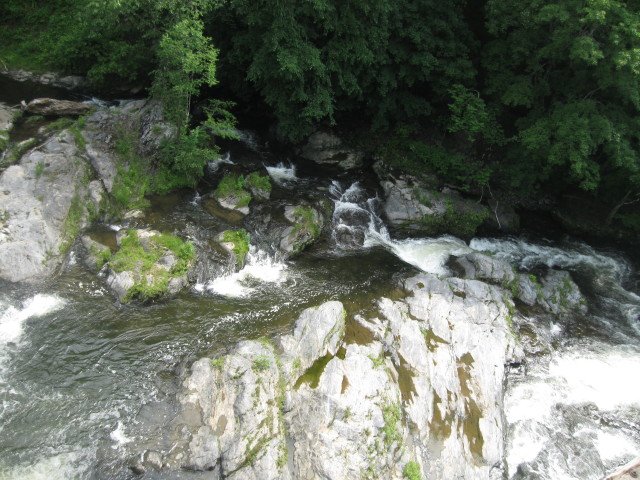
Walloomsac River.
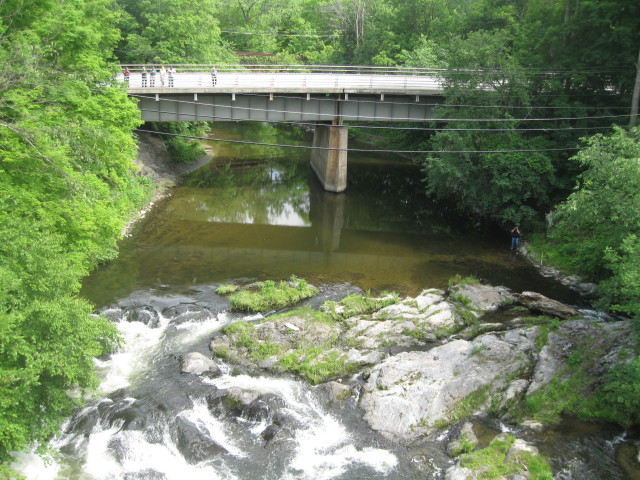
Walloomsac River.
The Walloomsac
River is a small river, forming in Woodford Hollow
of the Green Mountains, east of Bennington. The
river is created when Bolles Brook and City Stream
merge. Many maps show the river initially as
Walloomsac Brook, but the name Roaring Branch is
also used. Walloomsac Brook flows west through
Bennington, where most of its water was once
diverted from the river and used to power a number
of mills in town. From here, the river continues to
the west before flowing into the Hoosic River below
Hoosick Falls, New York
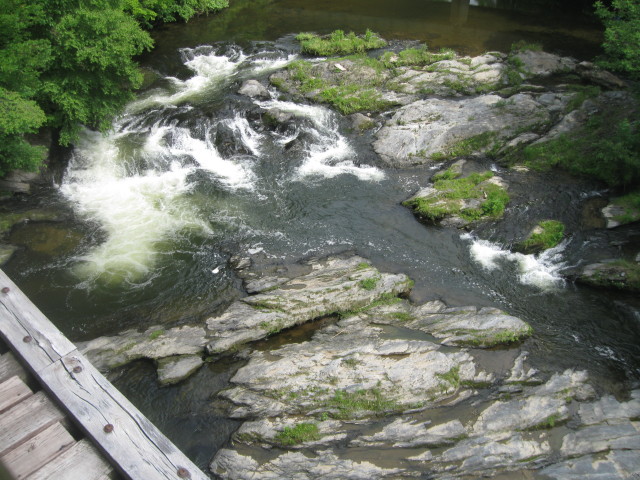
Walloomsac River.

Walloomsac River.
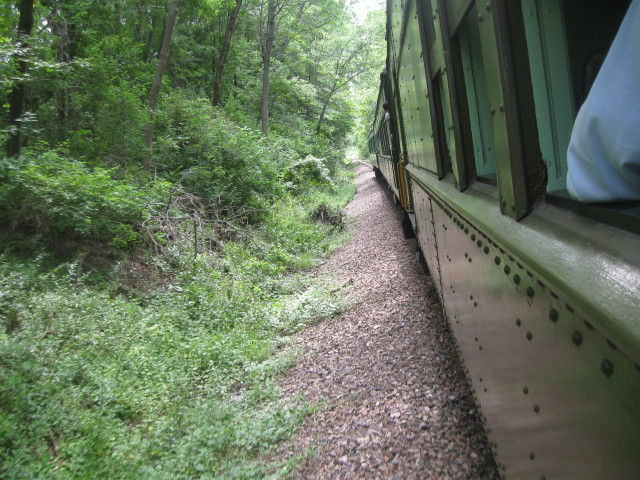
Looking toward the Macintyre car.
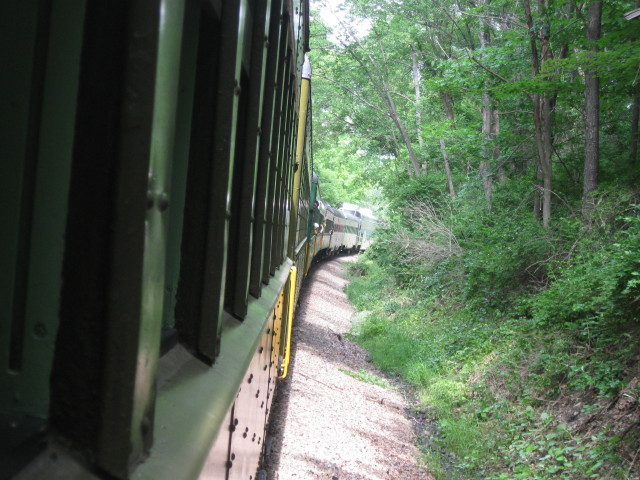
Looking toward dome car and the locos end of the
train.
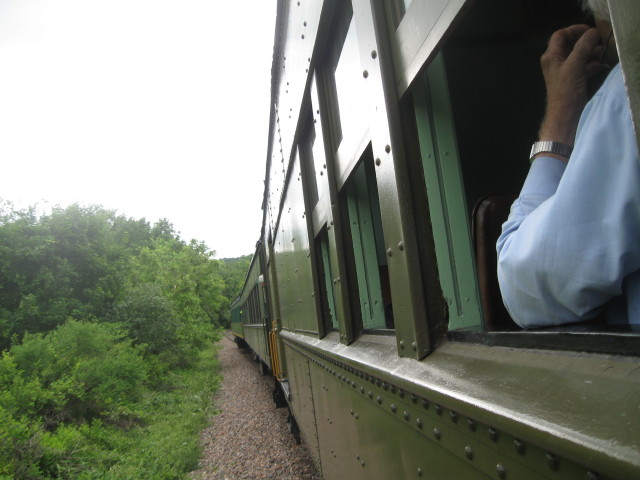
Looking toward the Macintyre car.
MP
H0.00 Hoosick Junction, NY
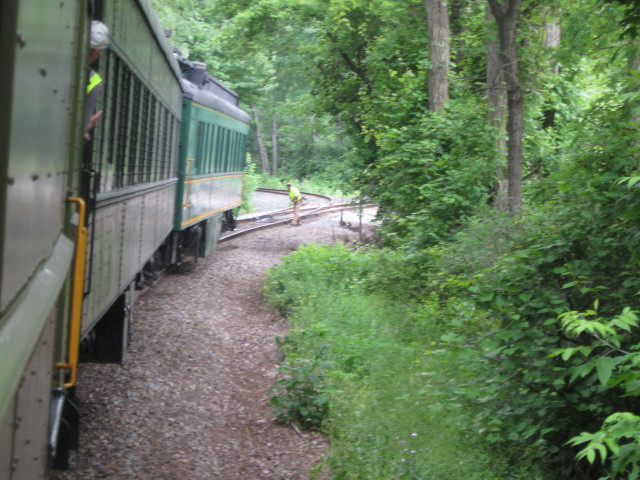
End of the line.
GPS 42 55.396 -73 21.647.
Click
to see map. Click back button on your browser to
return to this page.
Once our forward motion stopped,
we were at the end of the line. There was a small
pause before we started our return to the state line
and then North Bennington. The mile markers numbers
will increase until we reach Rutland.

Walloomsac River.
MP H1.1 North
Hoosick - What is today known as North Hoosick
started as St. Croix, an early French settlement.
Reportedly, the community was abandoned and replaced
by a English community, which was also abandoned
after being attacked by a party of French and
Indians on August 28, 1754.
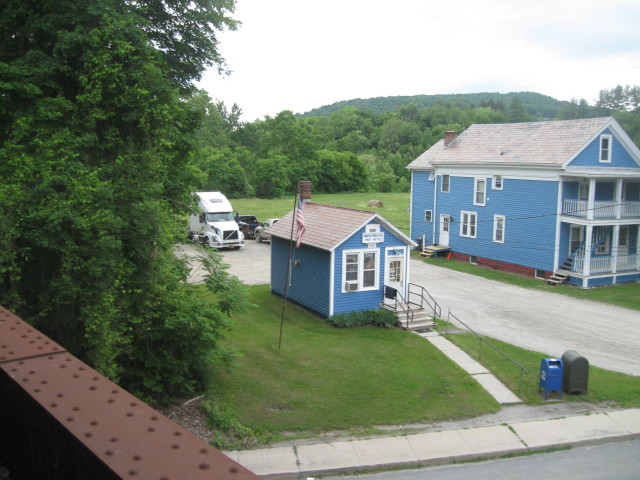
North Hoosick, NY Post Office. on Rte. 22 near
junction with Rte 67.
MP
H5.0 = 0.0 Mileage Conversion. White Creek
Station - White Creek is at the state line between
Vermont and New York, and the dividing line between
the original Troy & Bennington Railroad and the
Western Vermont Railroad.
On paper, White Creek was the
interchange point between the Rutland and later the
Vermont Railway, and the Boston & Maine.
However, the actual interchange was done in North
Bennington where a small yard, wye and agent made
the task easier.
As stated, White Creek is a
border town, with most of the community scattered
over several miles to the north. The highway grade
crossing is a good example as the road is called
State Line Road. To the south (railroad-east) is
State Line House, listed on the National Register of
Historic Places. The border goes through the middle
of the structure. When built in 1794, the house
faced the stagecoach road to the north, and what
eventually became the railroad tracks. Later, the
construction of a new road and the electric
interurban route to the south encouraged the owners
to make the back the front of the house. Later, the
owners turned part of the building into a bar,
allowing them to serve drinks in the state with the
most favorable laws at the time.
The tracks in New York are in
Rensselaer County. Kiliaen van Rensselaer, a Dutch
jeweler and merchant, purchased the area in 1630 and
created Rensselaerswyck. At the time, the land was
part of the Dutch colony of New Netherland. In 1664,
the land became English, but the Dutch regained
control in 1673. The land reverted back to the
English the next year and then became part o the
United States in 1776. Rensselaer County was created
in 1791 when land was taken from Albany County.
In Vermont, the county is
Bennington County, Bennington County was created on
March 17,1778, and is the oldest county in Vermont
still in existence. Over the years, several counties
were created out of Bennington, including Rutland
Country and part of Windham County. Bennington
County had two county seats, known in Vermont as
shire towns. These are Bennington (the Southshire)
and Manchester (the Northshire).
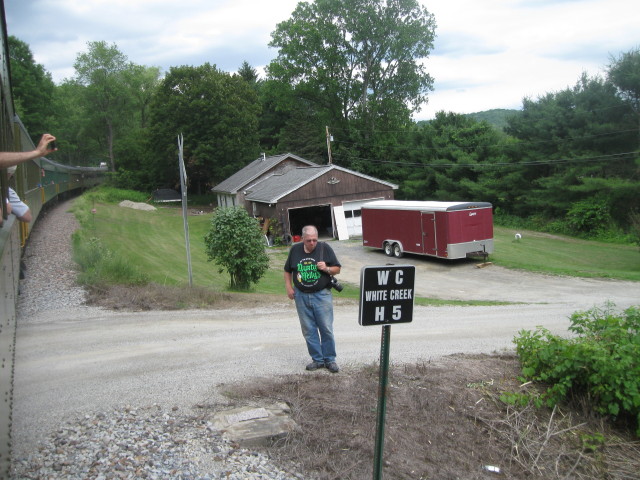
White Creek.
MP
1.96 North
Bennington 1.96 miles from state
line.
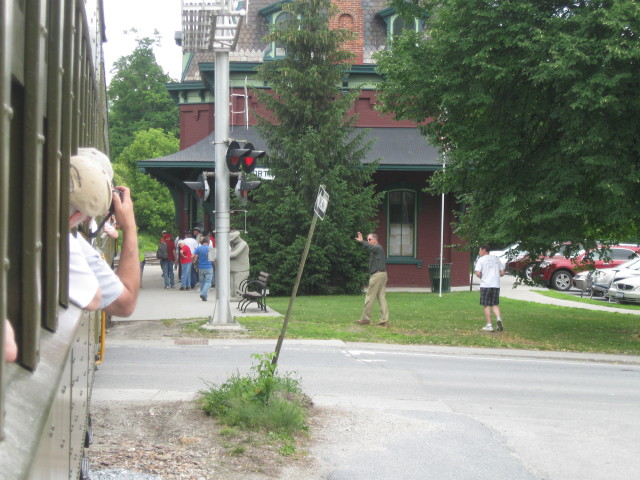
Our train arriving again in North Bennington crossing
Main St.
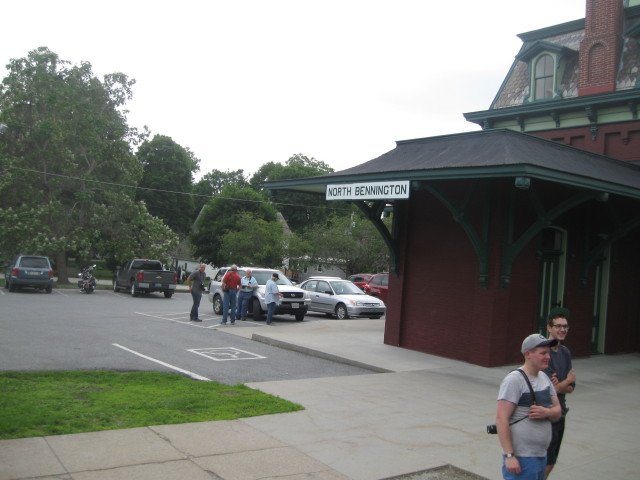
Leaving the station.
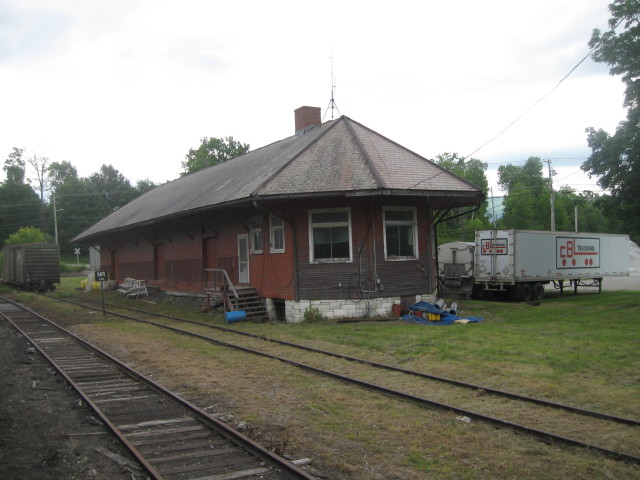
To the east of the station is the former Rutland
freight house, located to the south (railroad east) of
the mainline in the center of the wye.
Mileage marker "NR 1.96" to the left of building.
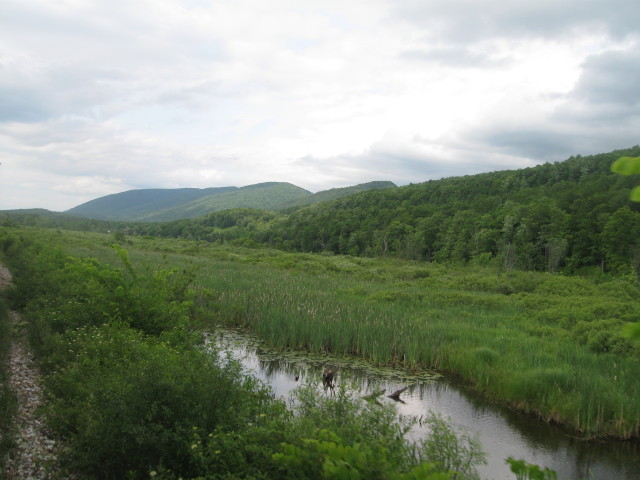
MP
28.33 East Dorset - An 1869
Bennington County Beers Atlas map for East Dorset
shows a village that boasted a hotel, two stores,
two churches, a school, a railroad, a cheese
factory, a lumbering operation, a wooden ware
manufacturer, at least eight marble mills or
finishing shops and many houses. Although the
industries are gone, almost all of the houses
remain. One of the most significant of these is the
Wilson House, originally the Mt. Aeolus Inn, located
across the highway to the east. This inn, built in
1852, was the birthplace of William Griffith Wilson,
also known as Bill Wilson or Bill W, co-founder of
Alcoholics Anonymous. Interestingly enough, Bill was
born in a room behind the bar operated by his
parents. He is buried nearby.
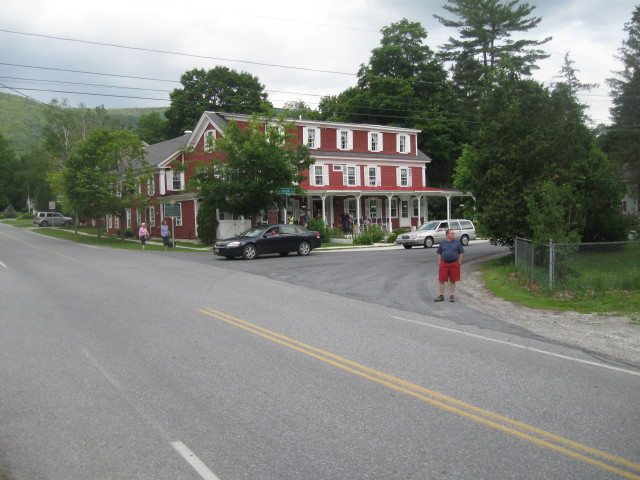
Wilson House.
Chick for Wilson
House. Click back button on your browser to return
to this page.
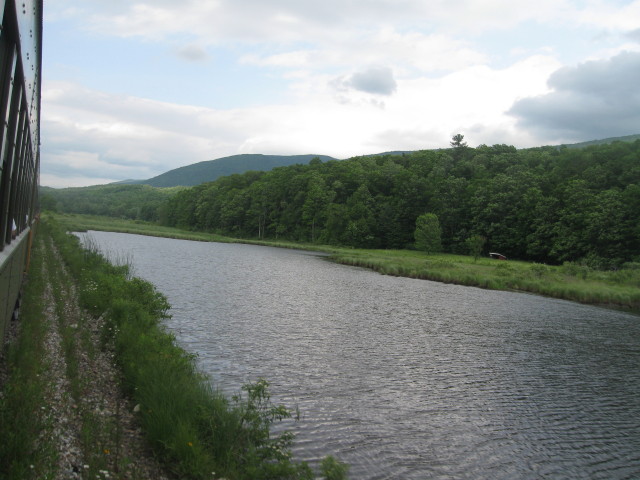
Otter Creek forms
on the western slopes of Mt. Tabor (el. 3043) and
flows southwesterly into the town of Dorset towards
East Dorset. From there, it flows northward into
Emerald Lake. Otter Creek continues flowing north
through the City of Rutland and then Proctor. It
eventually empties into Lake Champlain at
Ferrisburgh. Otter Creek is the longest river
in Vermont at more 110 miles, and Rutland
Railroad predecessors used its route for much of
their construction. The name Otter Creek comes from
its original French name 'La Riviere aux Loutres"
which means river of otters.
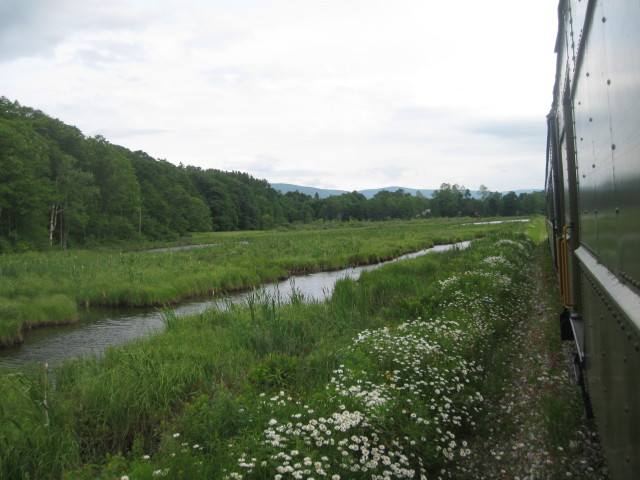

MP
54.52 Rutland - Amtrak
station. Our arrival of the last train of the
convention was at 7:40PM. The 2015 NRHS Convention
was a big success, a great week and we were able to
explore a lot of the GREEN
Mountain State. At the station Chris and I
said farewell to our fellow conventioneers wishing
them God speed on their return trip home and a
promise to meet again next year in Denver,
Colorado.
After leaving the
station, we made a dinner stop at KFC and returned
to our home for the past week. Tonight we have to
pack up and be ready to leave in the morning for a
new state, New Hampshire. From there we'll visit
Maine, then Massachusetts, Connecticut and then back
to Vermont for one last visit on 6/28 at
Brattleboro. A different motel every night. Like
being on road with a band. After leaving New
England, Chris and I will ride Amtrak to Norfolk for
a several days before going to Washington DC. I will
take the Crescent to New Orleans, spend 4th of July
there and visit with my cousin. From New Orleans I
will take the Sunset Limited home to California with
a quick visit with another cousin in Tuscon.
From DC Chris will travel to
Chicago on the Cardinal and then on the Southwest
Chief to home in Southern California.
What great adventures to
look forward to.
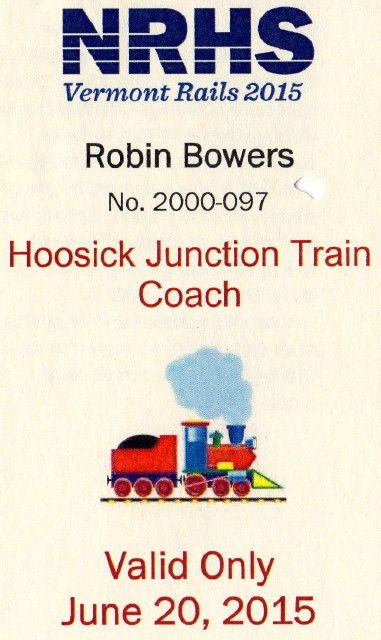
 Watch my video at : Click here to watch
video. Click Back button on your browser to return to
this page.
Watch my video at : Click here to watch
video. Click Back button on your browser to return to
this page.